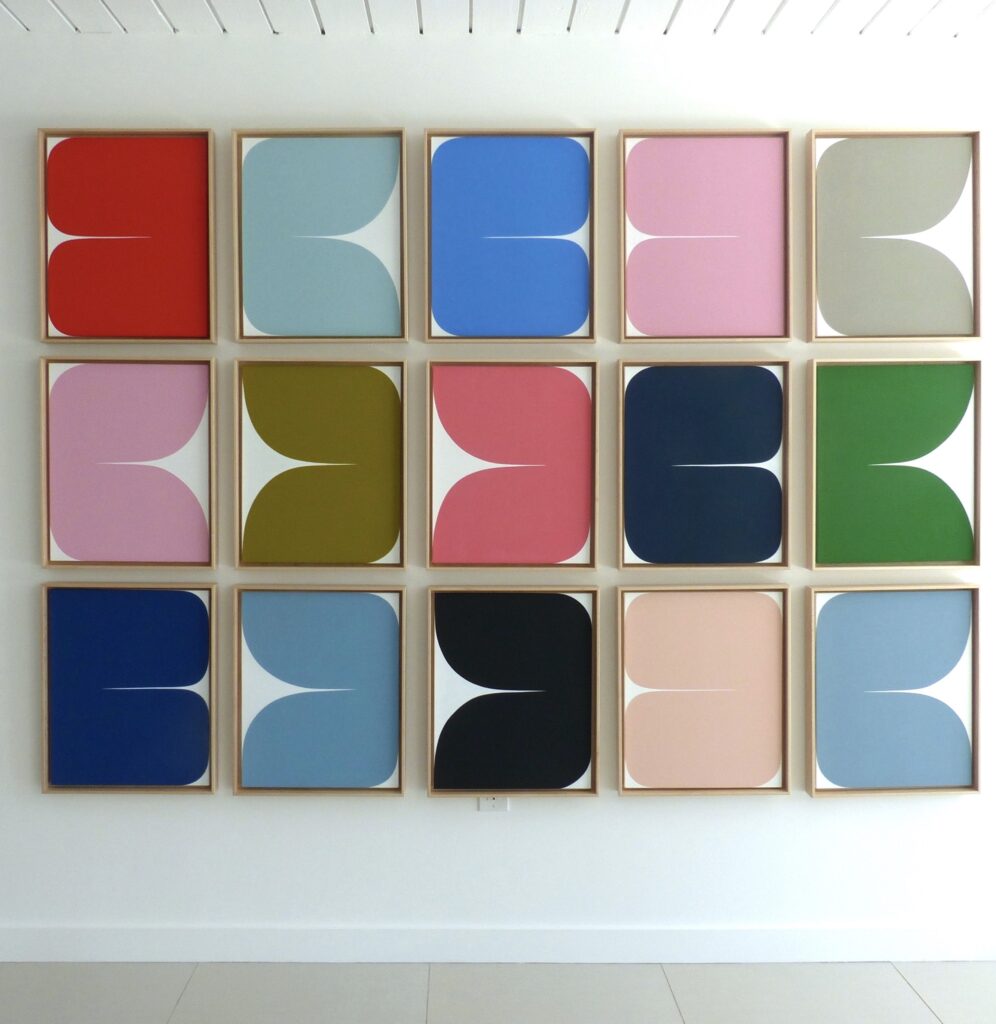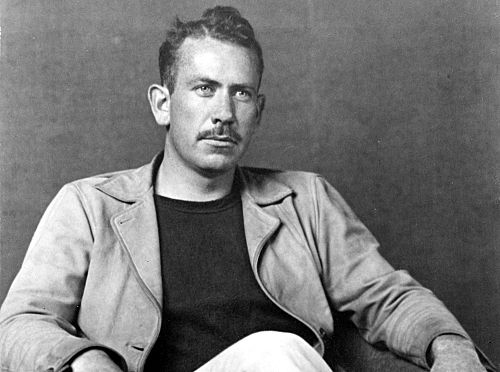February 25th, 2021 by dave dorsey

From Jim Mott, this little passage from a short story about a painter by Chekhov. It conveys to me, like many landscapes described by Proust in his novel, exactly why someone would develop a passion for landscape painting:
Doomed by fate to permanent idleness, I did positively nothing. For hours together I would sit and look through the windows at the sky, the birds, the trees and read my letters over and over again, and then for hours together I would sleep. Sometimes I would go out and wander aimlessly until evening.
Once on my way home I came unexpectedly on a strange farmhouse. The sun was already setting, and the lengthening shadows were thrown over the ripening corn. Two rows of closely planted tall fir-trees stood like two thick walls, forming a sombre, magnificent avenue. I climbed the fence and walked up the avenue, slipping on the fir needles which lay two inches thick on the ground. It was still, dark, and only here and there in the tops of the trees shimmered a bright gold light casting the colours of the rainbow on a spider’s web. The smell of the firs was almost suffocating. Then I turned into an avenue of limes. And here too were desolation and decay; the dead leaves rustled mournfully beneath my feet, and there were lurking shadows among the trees. To the right, in an old orchard, a yellow hammer sang a faint reluctant song, and he too must have been old. The lime-trees soon came to an end and I came to a white house with a terrace and a mezzanine, and suddenly a vista opened upon a farmyard with a pond and a bathing-shed, and a row of green willows, with a village beyond, and above it stood a tall, slender belfry, on which glowed a cross catching the light of the setting sun. For a moment I was possessed with a sense of enchantment, intimate, particular, as though I had seen the scene before in my childhood.
By the white-stone gate surmounted with stone lions, which led from the yard into the field, stood two girls. One of them, the elder, thin, pale, very handsome, with masses of chestnut hair and a little stubborn mouth, looked rather prim and scarcely glanced at me; the other, who was quite young–seventeen or eighteen, no more, also thin and pale, with a big mouth and big eyes, looked at me in surprise, as I passed, said something in English and looked confused, and it seemed to me that I had always known their dear faces. And I returned home feeling as though I had awoke from a pleasant dream.
February 22nd, 2021 by dave dorsey

Evelyn Waugh
From Brideshead Revisited:
Restrained by this wariness I asked him nothing of himself, but told him, instead about my autumn and winter. I told him about my rooms in the Ile Saint-Louis and the art school, and how good the old teachers were and how bad the students. ‘They never go near the Louvre,’ I said, ‘or, if they do, it’s only because one of their absurd reviews has suddenly “discovered” a master who fits in with that month’s aesthetic theory. Half of them are out to make a popular splash like Picabia; the other half quite simply want to earn their living doing advertisements for Vogue and decorating night clubs. And the teachers still go on trying to make them paint like Delacroix.’ ‘Charles,’ said Cordelia, ‘Modern Art is all bosh, isn’t it?’ ‘Great bosh.’ ‘Oh, I’m so glad. I had an argument with one of our nuns and she said we shouldn’t try and criticize what we didn’t understand. Now I shall tell her I have had it straight from a real artist, and snubs to her.’
February 19th, 2021 by dave dorsey

K.81 Combo, 3D painted sculpture, Frank Stella
I’ve been frustrated for years by my fruitless search for a catalog of Frank Stella’s work that gives the reader a comprehensive view of his gorgeous protractor series of minimalist abstractions in the 60s. I long to see the colors of those paintings reproduced as accurately as possible in a book, and especially in a retrospective devoted only to that series. To see those paintings assembled together, all on their own, would be worth the effort. Most of his career represents a repudiation of Clement Greenberg’s elevation of “flatness” as the defining characteristic of painting, an axiom that seems more and more irrelevant, even silly, with time–and now in retrospect seems even more to miss its target when applied to the painters he was trying to glorify. Rothko’s paintings are certainly a flat surface, but their simple glowing colors recede and advance as the tones of earth and sky do in a landscape, and that illusion of depth gives them part of their somber allure. They invite you to step in, toward that horizon line. After the austerity of the black and metal paintings, in which he constructed shaped canvases at least partly to defy Greenberg’s dictum, Stella embarked on a long exploration of color harmonies in a surrender to flatness, more or less. Many were shaped, but they worked because of color applied in flat patterns on a flat surface. Their lyrical restraint was what made them so charming. For me, they are distinguished by the thin gutter between each straight or curved stripe, a little buffer of white between each designer tone that allows each individual color to respond to the ones around it cleanly and distinctly.
I was reminded of these wonderful paintings–painted in a spirit of what I would consider mid-20th century abstract version of neo-classicism–serene and vibrant despite the relentless geometric order of their flat patterns, a celebration of Athenian moderation and order after the sturm und drang of AbEx. They were another avenue, along with Pop, for a rejection of the grim seriousness of the 50s. Why so serious, painters in the 60s seemed to be asking, but with a smile less violent than The Joker’s. Stella’s protractor designs are a celebration of art’s ability to manifest joy, as Dave Hickey’s last sentence does in The Invisible Dragon: “Beauty is and always will be blue skies and open highways.” It’s a sentence so full of the promise of America half a century ago, when Hickey immersed himself in the art world, when we were building a launch pad to fire ourselves at the moon and bringing civil rights to those who had never had it before. America–and Stella’s paintings along with it–felt like a launch pad for an unlimited future. Those protractor paintings are a visualization of happiness and possibility untainted by resentment or anxiety. The global economy hadn’t arrived just yet to erode the burgeoning American dream by narrowing it to exclude those who don’t have a share of Wall Street largesse. Stella’s brief Apollonian phase continues to be a reminder that human life can be a balance between head and heart, math and emotion, open roads under that beckoning, unattainable blue sky.
In my fruitless search for such a catalog of those late 60s paintings, I came across one of his much more recent baroque constructions, included in the Whitney retrospective a few years ago: K.81 Combo (K.37 and K.43) Large Size. It’s a continuation of his Sixties ebullience, by other means, in three dimensions. Stella considers it a visualization of a Scarlatti sonata. In three dimensions, and with color as delightful as a series of life-affirming musical tones, he is bringing what the color field painters did in the 60s into a branch of sculpture. It takes the fountain of interwoven counterpoint that is Baroque music and uses it as an imaginary armature for the construction of brightly colored surfaces that seem to swirl outward and back into themselves like orderly solar flares. As I gazed at the reproduction of Stella’s sculpture, I was struck by how it’s doing something I’ve been trying to echo in my current paintings of salt water taffy.
I think of these paintings as portraits of a highly simplified, three-dimensional color field painting, as if someone had taken a painted canvas and crumpled it into a ball and then let it expand randomly into its final punished shape–all the spirals and glowing quadrants of color deformed and fused into a lump and then wrapped in translucent waxed paper, giving the patterns of color a diffuse, glowing, partly concealed quality. In the shards of translucent paper that surround the candy and flare outward at each side like wings, I’m establishing patterns and lines, whorls and dents and fissures, that repeat and connect in unexpected ways, as the lines in a Braque gueridon do. Before I ever pick up a brush, I create much of these formal qualities, the composition itself, with my fingertips. I often unwrap the taffy and rewrap it myself with waxed paper from the kitchen. I try to gently twist the wax paper (I cut it to precise dimensions) so that it wrinkles it as little as possible while preserving the curved planes. As I’m doing this, I create the object I will work from, building this uniform “armature” for color in the painted image. As I paint flat patterns of tones I will rework with greater and greater detail, I feel the spirit of a dozen previous painters whose work I love flicker through the process. It’s as if the painting goes through its Milton Avery and Braque period when it’s a flat pattern of uniform color and then emerges as a greatly enlarged single object still life–but it’s a still life of three-dimensional chunks of candy making patterns that remind me mostly of color field painters from half a century ago. As I was doing in my candy jar paintings, and intend to do again in future ones, I’m constantly drawing energy and desire from the qualities of those modernists: Stella, Noland, Hammersley, Avery, Frankenthaler, Francis, and so many others, painters whose work became a sort of visual equivalent to music.
February 16th, 2021 by dave dorsey

C.S. Lewis
C.S. Lewis, from The Abolition of Man, a passage that serves as a commentary on post-modernism, before there was such a thing, and how all moral imperatives ultimately are based on values that are accepted as “given” rather than individually chosen or invented, or culturally determined. What’s good is ultimately good in and of itself and not because certain individuals or groups of individuals chose it or enjoy it or invent it:
In their second chapter Gaius and Titius quote the well-known story of Coleridge at the waterfall. You remember that there were two tourists present: that one called it ‘sublime’ and the other ‘pretty’; and that Coleridge mentally endorsed the first judgement and rejected the second with disgust. Gaius and Titius comment as follows: ‘When the man said This is sublime, he appeared to be making a remark about the waterfall… Actually … he was not making a remark about the waterfall, but a remark about his own feelings. What he was saying was really I have feelings associated in my mind with the word “Sublime”, or shortly, I have sublime feelings’ Here are a good many deep questions settled in a pretty summary fashion. But the authors are not yet finished. They add: ‘This confusion is continually present in language as we use it. We appear to be saying something very important about something: and actually we are only saying something about our own feelings.’
The feelings which make a man call an object sublime are not sublime feelings but feelings of veneration. If This is sublime is to be reduced at all to a statement about the speaker’s feelings, the proper translation would be I have humble feelings.
The schoolboy who reads this passage in The Green Book will believe two propositions: firstly, that all sentences containing a predicate of value are statements about the emotional state of the speaker, and secondly, that all such statements are unimportant. It is true that Gaius and Titius have said neither of these things in so many words.
The authors themselves, I suspect, hardly know what they are doing to the boy, and he cannot know what is being done to him.
From this passage the schoolboy will learn about literature precisely nothing. What he will learn quickly enough, and perhaps indelibly, is the belief that all emotions aroused by local association are in themselves contrary to reason and contemptible.
Another little portion of the human heritage has been quietly taken from them before they were old enough to understand.
The differences between us may go all the way down. They may really hold that the ordinary human feelings about the past or animals or large waterfalls are contrary to reason and contemptible and ought to be eradicated. They may be intending to make a clean sweep of traditional values and start with a new set.
They see the world around them swayed by emotional propaganda—they have learned from tradition that youth is sentimental—and they conclude that the best thing they can do is to fortify the minds of young people against emotion. My own experience as a teacher tells an opposite tale. For every one pupil who needs to be guarded from a weak excess of sensibility there are three who need to be awakened from the slumber of cold vulgarity. The task of the modern educator is not to cut down jungles but to irrigate deserts. The right defense against false sentiments is to inculcate just sentiments. By starving the sensibility of our pupils we only make them easier prey to the propagandist when he comes. For famished nature will be avenged and a hard heart is no infallible protection against a soft head.
Until quite modern times all teachers and even all men believed the universe to be such that certain emotional reactions on our part could be either congruous or incongruous to it—believed, in fact, that objects did not merely receive, but could merit, our approval or disapproval, our reverence or our contempt.
‘Can you be righteous’, asks Traherne, ‘unless you be just in rendering to things their due esteem? All things were made to be yours and you were made to prize them according to their value.’
St Augustine defines virtue as ordo amoris, the ordinate condition of the affections in which every object is accorded that kind of degree of love which is appropriate to it. Aristotle says that the aim of education is to make the pupil like and dislike what he ought.
The little human animal will not at first have the right responses. It must be trained to feel pleasure, liking, disgust, and hatred at those things which really are pleasant, likeable, disgusting and hateful.14 In the Republic, the well-nurtured youth is one ‘who would see most clearly whatever was amiss in ill-made works of man or ill- grown works of nature, and with a just distaste would blame and hate the ugly even from his earliest years and would give delighted praise to beauty, receiving it into his soul and being nourished by it, so that he becomes a man of gentle heart.
In early Hinduism that conduct in men which can be called good consists in conformity to, or almost participation in, the Rta—that great ritual or pattern of nature and supernature which is revealed alike in the cosmic order, the moral virtues, and the ceremonial of the temple. Righteousness, correctness, order, the Rta, is constantly identified with satya or truth, correspondence to reality. As Plato said that the Good was ‘beyond existence’ and Wordsworth that through virtue the stars were strong, so the Indian masters say that the gods themselves are born of the Rta and obey it.
The Chinese also speak of a great thing (the greatest thing) called the Tao. It is the reality beyond all predicates, the abyss that was before the Creator Himself. It is Nature, it is the Way, the Road. It is the Way in which the universe goes on, the Way in which things everlastingly emerge, stilly and tranquilly, into space and time. It is also the Way which every man should tread in imitation of that cosmic and supercosmic progression, conforming all activities to that great exemplar.17 ‘In ritual’, say the Analects, ‘it is harmony with Nature that is prized.’18 The ancient Jews likewise praise the Law as being ‘true’.
This conception in all its forms, Platonic, Aristotelian, Stoic, Christian, and Oriental alike, I shall henceforth refer to for brevity simply as ‘the Tao’. Some of the accounts of it which I have quoted will seem, perhaps, to many of you merely quaint or even magical. But what is common to them all is something we cannot neglect. It is the doctrine of objective value, the belief that certain attitudes are really true, and others really false, to the kind of thing the universe is and the kind of things we are.
The practical result of education in the spirit of The Green Book must be the destruction of the society which accepts it.
However subjective they may be about some traditional values, Gaius and Titius have shown by the very act of writing The Green Book that there must be some other values about which they are not subjective at all. They write in order to produce certain states of mind in the rising generation, if not because they think those states of mind intrinsically just or good, yet certainly because they think them to be the means to some state of society which they regard as desirable.
And this end must have real value in their eyes. To abstain from calling it good and to use, instead, such predicates as ‘necessary’ or ‘progressive’ or ‘efficient’ would be a subterfuge. They could be forced by argument to answer the questions ‘necessary for what?’, ‘progressing towards what?’, ‘effecting what?’; in the last resort they would have to admit that some state of affairs was in their opinion good for its own sake. And this time they could not maintain that ‘good’ simply described their own emotion about it.
February 13th, 2021 by dave dorsey

The Moon Woke Me Up Fifteen Times, Sara Genn, acrylic on canvas
Back when an office copier seemed to be something almost large enough to step into and drive, there was a gag familiar to most people who ever used a big Xerox machine. Someone would inevitably hop up onto it and moon its flashing light to duplicate their naked rear end. It was a trending gag in office spaces for a while: drop trousers, sit on platen glass, press button. Judd Apatow humor. I was amused that all of this was brought to mind by Sara Genn’s marvelous cluster of paintings, assembled into a grid—lovely and suggestive tulip petals, rows of them, each in a color as subtle and lyrical as the tones of Stella’s floral geometry in the Sixties. It’s little wonder her work was awarded finalist status for the Luxembourg Prize last year. Hers was the most beautiful and accomplished of all the work entered for that generous prize.
The Moon Woke Me Up Fifteen Times seduces the viewer gently but relentlessly with the quiet joy of its variations on a single note: a curved bifurcated shape that’s part ravenous Pac Man, part tulip in profile, part suggestion of human life’s anatomical axis in the shape of a Xeroxed moon. What I mean is, along with everything else it evokes, it’s also a colors-of-Benneton cluster of bare derrieres—and that hint of irreverent burlesque puts a cheerful cap on all the work’s other virtues.
Her title is an homage to a Basho poem, “The moon woke me up nine times.” It’s a haiku full of Basho’s characteristic simplicity, profound in its matter-of-fact celebration of the moon’s fleeting beauty and its uncharacteristic sense of humor, a quality more typical of Basho’s poetic descendant, Issa. You can’t tell whether the moon stirred him because it was bright and full, and thus impossible to escape as he slept outside on one of his itinerant quests into the natural world, or did he keep waking up on the hour all through the night because he didn’t want to miss a moment of its luminous silence?
Aside from changing the number of awakenings to suit her formal ambitions, Sara Genn modifies the line into a smiling affirmation of how many times her duplicated moon woke her to rapt attention and celebration of one subtle color after another. But you have to recognize the funny pun packed into the word moon in order to understand this affirmation of her artistic awakening. Alongside that, you realize the line asserts a night of unquenchable desire, the way an old blues lyric is likely to do. But the desire here has been sublimated into a sequence of notes, like a refrain from Erik Satie. The tension between the title’s humor and the simple perfection of those color harmonies, the slight way in which each pair of lips has been parted to create a unique spire of negative white space that disappears into the rich color that surrounds it—the pull between the sincerity of that beauty and the slightly ribald remix of Basho reminds me of how Frederick Hammersley worked so hard to make his viewers smile at his clever titles for small-scale, heartfelt color harmonies. Genn’s work is a close neighbor to Hammersley’s minimalist lyricism. She’s absolutely serious about the radiant beauty she composes in this simple sequence of tones, but she lets her wit give it a title it doesn’t require to do its work. Ever since I first saw this image months ago, I haven’t yet been able to look at it without smiling.
February 10th, 2021 by dave dorsey

John Steinbeck
From Cannery Row:
Henri the painter was occupied, for Holman’s Department Store had employed not a flag-pole sitter but a flag-pole skater. On a tall mast on top of the store he had a little round platform and there he was on skates going around and around. He had been there three days and three nights. He was out to set a new record for being on skates on a platform. The previous record was 127 hours so he had some time to go. Henri had taken up his post across the street at Red Williams’ gas station. Henri was fascinated. He thought of doing a huge abstraction called Substratum Dream of a Flag-pole Skater.
Henri the painter was not French and his name was not Henri. Also he was not really a painter. Henri had so steeped himself in stories of the Left Bank in Paris that he lived there although he had never been there. Feverishly he followed in periodicals the Dadaist movements and schisms, the strangely feminine jealousies and religiousness, the obscurantisms of the forming and breaking schools. Regularly he revolted against outworn techniques and materials. One season he threw out perspective. Another year he abandoned red, even as the mother of purple. Finally he gave up paint entirely. It is not known whether Henri was a good painter or not for he threw himself so violently into movements that he had very little time left for painting of any kind. About his painting there is some question. You couldn’t judge very much from his productions in different colored chicken feathers and nutshells. But as a boat builder he was superb. Henri was a wonderful craftsman. He had lived in a tent years ago when he started his boat and until galley and cabin were complete enough to move into. But once he was housed and dry he had taken his time on the boat. The boat was sculptured rather than built. It was thirty-five feet long and its lines were in a constant state of flux. For a while it had a clipper bow and a fantail like a destroyer. Another time it had looked vaguely like a caravel. Since Henri had no money, it sometimes took him months to find a plank or a piece of iron or a dozen brass screws. That was the way he wanted it, for Henri never wanted to finish his boat.
Henri had been living in and building his boat for ten years. During that time he had been married twice and had promoted a number of semi-permanent liaisons. And all of these young women had left him for the same reason. The seven-foot cabin was too small for two people. They resented bumping their heads when they stood up and they definitely felt the need for a toilet. Marine toilets obviously would not work in a shore-bound boat and Henri refused to compromise with a spurious landsman’s toilet. He and his friend of the moment had to stroll away among the pines. And one after another his loves left him.
“That painter guy came back to the Palace,” Hazel offered. “Yes?” said Doc. “Yeah! You see, he done all our pictures in chicken feathers and now he says he got to do them all over again with nutshells. He says he changed his—his med—medium.” Doc chuckled. “He still building his boat?” “Sure,” said Hazel. “He’s got it all changed around. New kind of a boat. I guess he’ll take it apart and change it. Doc—is he nuts?” Doc swung his heavy sack of starfish to the ground and stood panting a little. “Nuts?” he asked. “Oh, yes, I guess so. Nuts about the same amount we are, only in a different way.” Such a thing had never occurred to Hazel. He looked upon himself as a crystal pool of clarity and on his life as a troubled glass of misunderstood virtue. Doc’s last statement had outraged him a little. “But that boat—” he cried. “He’s been building that boat for seven years that I know of. The blocks rotted out and he made concrete blocks. Every time he gets it nearly finished he changes it and starts over again. I think he’s nuts. Seven years on a boat.” Doc was sitting on the ground pulling off his rubber boots. “You don’t understand,” he said gently. “Henri loves boats but he’s afraid of the ocean.” “What’s he want a boat for then?” Hazel demanded. “He likes boats,” said Doc. “But suppose he finishes his boat. Once it’s finished people will say, ‘Why don’t you put it in the water? ’ Then if he puts it in the water, he’ll have to go out in it, and he hates the water. So you see, he never finishes the boat—so he doesn’t ever have to launch it.”





